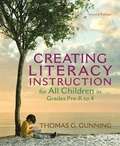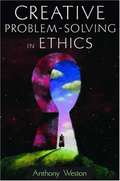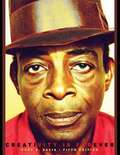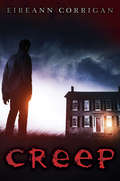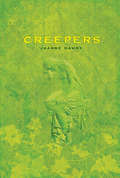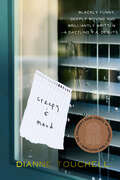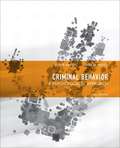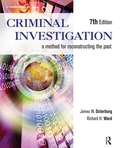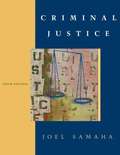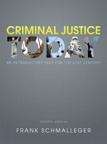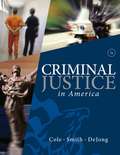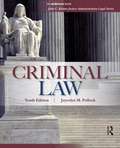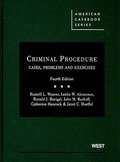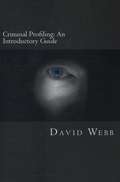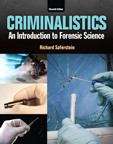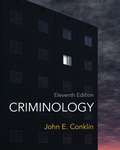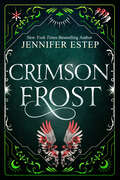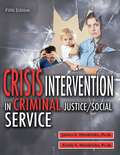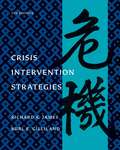- Table View
- List View
Creating Literacy Instruction For All Children In Grades Pre-K to 4
by Thomas G. GunningIn response to today's need to tailor instruction for the lower grades (PreK-4), this comprehensive, practical guide gives aspiring and practicing professionals the methods and techniques they need to become highly effective teachers who are well equipped to help all students become proficient readers and writers. Creating Literacy Instruction for All Children in Grades Pre-K to 4 features lesson plans for virtually every major literacy skill or strategy, abundant lists of recommended children's reading, helpful student strategies, numerous reinforcement activities, and real-life illustrations of exemplary teaching, all designed to help teachers incorporate today's most effective teaching methods and techniques into their literacy teaching.
Creating Minds: An Anatomy of Creativity as Seen Through the Lives of Freud, Einstein, Picasso, Stravinsky, Eliot, G
by Howard GardnerThe man who revolutionized our understanding of intelligence now gives us a pathbreaking view of creativity, along with riveting portraits of seven figures who each reinvented an area of human endeavor. Understanding their diverse achievements not only sheds light on the nature of creativity but also elucidates the “modern era”-the times that formed them and that they in turn helped to define.
Creative Problem-Solving In Ethics
by Anthony WestonA readable and insightful guide to ethical dilemmas.
Creativity Is Forever (5th edition)
by Gary A. DavisThis book was prepared for any adult interested in better understanding the topic of creativity, becoming a more creative person, or teaching others to think more creatively. It is true that much about human creativity remains---and will remain---an intriguing mystery. It is difficult indeed to untangle the drives, thoughts images, and inspirations of a Thomas Edison, Georgia O'Keeffe, or Walt Disney. As we will see in Chapter 3, extraordinarily creative people have not understood their own creativeness. However, it also is absolutely true that we do understand much about creativity and creative people---their energetic and curious personalities, their ideas--finding processes and strategies, and the circumstances that support or squelch their lively imaginations and innovative thinking.
Creep
by Eireann CorriganThe haunting tale of a family that moves into a house... and finds that someone -- or something -- does NOT want them there.Olivia is curious about the people moving into 16 Olcott Place. The last family there moved out in the dead of night, and the new family, the Donahues, has no idea why. Olivia becomes fast friends with Janie Donahue . . . so she's there at the house when the first of the letters arrives:--I am the Sentry of Glennon Heights. Long ago I claimed 16 Olcott Place as levy for my guardianship. The walls will not tolerate your trespass. The ceilings will bleed and the windows will shatter. If you do not cease your intrusion, the rooms will soon smell of corpses.--Who is the Sentry? And why does the Sentry want the Donahues out of the house badly enough to kill? As Olivia and Janie explore the house, they find a number of sinister secrets . . . and as they explore their town, they find a hidden history that the Sentry wants to remain hidden forever. You can lock the doors. You can close the windows. But you can't keep the Sentry out. . . .
Creepers
by Joanne DahmeFrom moving to a new house to making new friends and preparing for high school, life for the new girl in town can be unsettling. But thirteen year-old Courtney is unprepared for how creepy life in Murmur, Massachusetts turns out to be. Her ivy-covered house overlooking the antiquated cemetery next door is one thing, but Courtney finds herself thrust into a full-fledged haunted adventure after meeting Christian and Margaret Geyer, a strange father and daughter with unfinished family business. The body of their ancestor, Prudence, has gone missing from beneath her ivy-carved tombstone and must be returned to its final resting place in order to break the spell that looms over Courtney's house. To add to the suspense and help solve the mystery, authentic documents and photographs are set at the beginning of each chapter pertaining to Murmur, Courtney's house, and the infamous cemetery. Will Courtney uncover the secret lurking within the dark, dank underbelly of her ivy-covered basement?
Creepy & Maud
by Dianne TouchellHilarious and heartbreaking, Creepy & Maud charts the relationship between two social misfits, played out in the space between their windows. Creepy is a boy who watches from the shadows keenly observing and caustically commentating on human folly. Maud is less certain. A confused girl with a condition that embarrasses her parents and assures her isolation. Together Creepy and Maud discover something outside their own vulnerability — each other's. But life is arbitrary; and loving someone doesn't mean you can save them. Creepy & Maud is a blackly funny and moving first novel that says; 'You're ok to be as screwed up as you think you are and you're not alone in that.'
Criminal Behavior: A Psychological Approach (Tenth Edition)
by Curt R. Bartol Anne M. BartolA comprehensive psychological approach to criminal behavior. Accurate, researched-based, contemporary, and comprehensive: Criminal Behavior: A Psychological Approach, Tenth Edition, builds on the excellence established in previous editions. The text offers a detailed look at crime, what may lead to it, and how criminal behavior may be prevented, all from a psychological perspective. Focusing on serious crimes, particularly those involving violence, Criminal Behavior offers a comprehensive look at this complex field with effective and engaging material that has been classroom-tested for over thirty years.
Criminal Investigation (Ninth Edition)
by Kären M. Hess Wayne W. Bennett Christine Hess OrthmannCriminal Investigation, 9th Edition stresses practical procedures, techniques, and applications of private and public investigations to provide students with a solid foundation in criminal investigation. Criminal Investigation, 9th Edition features updated, enhanced coverage of such important topics as terrorism and homeland security, cybercrime, forensics and physical evidence, federal law enforcement investigations, report writing, crimes against children, photography and sketching, preparing and presenting cases in court, and identity theft. Criminal Investigation, 9th Edition includes a carefully structured learning system, checklists, and visuals to make learning easy.
Criminal Investigation: A Method For Reconstructing the Past (Seventh Edition)
by James W. Osterburg Richard H. WardThis text presents the fundamentals of criminal investigation and provides a sound method for reconstructing a past event (i. e. , a crime), based on three major sources of information -- people, records, and physical evidence. Its tried-and-true system for conducting an investigation is updated with the latest techniques available, teaching the reader new ways of obtaining information from people, including mining the social media outlets now used by a broad spectrum of the public; how to navigate the labyrinth of records and files currently available online; and fresh ways of gathering, identifying, and analyzing physical evidence.
Criminal Justice
by Joel SamahaThe book covers the traditional core of the criminal justice system (police, courts, and corrections), focusing on the decision- making and evaluation of criminal justice policies and practices. The author has taken a provocative view of the CJ system to encourage critical thinking, providing a realistic look at problems as well as new programs which offer promise for the future.
Criminal Justice Today: An Introductory Text For The Twenty-first Century (Eighth Edition)
by Frank M. SchmallegerIn a substantially revised eighth edition, Criminal Justice Today continues to set the standard by which all other introductory criminal justice textbooks are measured. The hallmark features that have made Criminal Justice Today the most widely read college criminal justice textbook form the core of this new edition. They include: A thematic approach that contrasts the justice system's twin goals of ensuring public order and safety while guaranteeing individual rights. the book's theme, present since the first edition, is more relevant today and continues to significantly influence the direction of American society. Timely content, including current issues such as efforts to enhance homeland security, concerns about restrictions on individual freedoms in the face of terrorist threats, corporate crime, identity theft, high-technology crime, and special issues such as policing an ever-changing multicultural society. A futures orientation, including a special chapter on the future of criminal justice that points the way to and helps students appreciate the unchanging foundation upon which American criminal justice rests. Accessible technology, including easy-to-use digital tools that make it simple to stay abreast of the latest news, research reports, and government-sponsored studies of relevance to the study of criminal justice. The eighth edition also brings exciting new features to Criminal Justice Today. Among them are: Expanded police coverage, including an entirely new chapter on police organization and management. The criminal justice system's response to terrorism, including broad coverage of homeland security issues, the impact of domestic and international terrorism on criminal justice practices and procedures, individual rights in the face of enhanced security; and terrorism prevention, response, and control. Detailed coverage of corporate crime, including possible criminal activities of companies such as Enron, WorldCom, Adelphia, Vivendi Universal, Kmart, Global Crossing, Tyco International, and London-based auction house Sotheby's. Crime mapping, predictive, and enforcement technologies, including CompStat and CopLink software, wearable augmented reality devices, and biometrics. Expanded coverage of crime scene investigative strategies and techniques, with special graphics provided by the Massachusetts State Police.
Criminal Justice Today: An Introductory Text for the 21st Century (12th Edition)
by Frank J. Schmalleger"Criminal Justice Today," 12/e, continues to lead as the gold-standard for criminal justice texts. Best-selling, student- and instructor-preferred, and time-tested--Schmalleger is the most current and popular text in the market. The text guides criminal justice students in the struggle to find a satisfying balance between freedom and security, and focuses on the crime picture in America and on the three traditional elements of the criminal justice system: police, courts, and corrections.
Criminal Justice Today: An Introductory Text for the 21st Century (13th Edition)
by Frank J. SchmallegerOnce again, Schmalleger is the most current and popular text on the market and continues to lead as the gold-standard among criminal justice texts today! Criminal Justice Today: An Introductory Text for the 21st Century, 13e continues to lead as the gold-standard for criminal justice texts. Best-selling, student- and instructor-preferred, and time-tested-Schmalleger is the most current and popular text on the market. This textbook guides criminal justice students in the struggle to find a satisfying balance between freedom and security. True to its origins, the thirteenth edition focuses on the crime picture in America and on the three traditional elements of the criminal justice system: police, courts, and corrections. This edition continues to question the viability of our freedoms in a world that has grown increasingly more dangerous. Students are asked to evaluate the strengths and weaknesses of the American justice system as it struggles to adapt to an increasingly multicultural society and to a society in which the rights of a few can threaten the safety of many.
Criminal Justice in America (7th Edition)
by George F. Cole Christopher E. Smith Christina DejongThe book is designed to provide thorough introduction and comprehensive coverage to the dynamics of the American criminal justice system and illuminates contemporary issues and problems.
Criminal Justice: A Brief Introduction (9th Edition)
by Frank J. SchmallegerThe first and BEST-SELLING brief introduction to criminal justice text, Criminal Justice: A Brief Introduction 9e offers instructors and students a trusted, authoritative and impeccably researched introduction to police, courts, and corrections. Designed with a new visual approach, this edition integrates graphic art with the important concepts and ideas of criminal justice. Its unifying theme, its unmatched timeliness and its coverage of trends and technology makes this text THE standard by which all other brief texts are judged.
Criminal Law (Tenth Edition)
by Joycelyn M. PollockThe book combines the best features of a traditional law casebook with those of a textbook that helps students learn how to identify the issues and holdings from court decisions.
Criminal Law and Procedure for the Paralegal
by Neal R. BevansDelving into one of the most fascinating areas of legal practice, this book shows the real world of prosecutors, defense attorneys and paralegals in criminal law. The author brings the study of criminal law alive. Actual examples of criminal cases are investigated and explained, defenses are explored, and appellate processes are examined.
Criminal Procedure: Cases, Problems and Exercises (4th edition)
by Russell L. Weaver Leslie W. AbramsonThe fourth edition contains thought-provoking problems, and is designed to encourage classroom discussion, and help students effectively learn criminal procedure principles. Ideally suited for a one-semester course, this casebook contains all the essential decisions without being overwritten or so massive as to be unwieldy. in addition, the new edition is completely up-to-date containing the latest decisions from the United States Supreme Court, as well as problems based on important lower court decisions. Criminal Procedure: Cases, Problems and Exercises is unique because the authors actively seek to place students in situations that they are likely to encounter in practice, and asks students to think about how they might handle those situations (e. g. , what does a lawyer do when asked to represent a client at a lineup?). for this new edition, the authors have added a significant number of new problems. They have also added important cases from the United States Supreme Court's recent terms. (American Casebooks)
Criminal Profiling: An Introductory Guide
by David WebbInterested in Criminal Profiling? Designed to let you dive straight into this fascinating topic, Criminal Profiling: An Introductory Guide is based on a series of classes from an undergraduate program in forensic psychology. The guide provides clear and concise information on central issues such as the origins of criminal profiling, FBI profiling methodology and limitations; and whether becoming a profiler is a realistic career path. If you are interested in criminal profiling and would like to learn more, Criminal Profiling: An Introductory Guide is the perfect place to start.
Criminalistics: An Introduction to Forensic Science
by Richard SafersteinThis best-selling text, written for the non-scientist, is appropriate for a wide variety of students, including criminal justice, law enforcement, law, and more! Criminalistics: An Introduction to Forensic Science, 11e, strives to make the technology of the modern crime laboratory clear and comprehensible to the non-scientist. The nature of physical evidence is defined, and the limitations that technology and current knowledge impose on its individualization and characterization are examined. By combining case stories with applicable technology, Criminalistics endeavors to capture the pulse and fervor of forensic science investigations. A major portion of the text centers on discussions of the common items of physical evidence encountered at crime scenes. These chapters include descriptions of forensic analysis, as well as updated techniques for the proper collection and preservation of evidence at crime scenes. Particular attention is paid to the meaning and role of probability in interpreting the evidential significance of scientifically evaluated evidence.
Criminology (Eleventh Edition)
by John E. ConklinThe eleventh edition of Criminology is a lively introduction to the study of crime. As opposed to the "crime-of-the-week" approach common to many other texts, Conklin introduces students to critical issues in the field, such as the way people learn to commit crime, the development of criminal careers, and the organization of criminal behavior. The text is illustrated with copious boxed selections, easy-to-interpret tables and graphs, and dozens of compelling boxed features. While thoroughly researched and authoritative, the text is accessible to students and well-suited for one-semester courses.
Crimson Frost (The Mythos Academy #4)
by Jennifer EstepHigh school gets even harder when there&’s an evil god on the loose in the New York Times bestselling author&’s YA urban fantasy novel.My name is Gwen Frost, and I go to Mythos Academy, a school of myths, magic and warrior whiz kids. And now there&’s also Loki, the evil god I helped set free against my will. On the bright side, I finally got a date with Logan Quinn, the hottest—and deadliest—Spartan at Mythos. But I should have known it was destined to end in disaster. If we'd gotten into a swordfight, or been ambushed by Reapers, I'd have been more prepared. I definitely didn&’t expect to get arrested mid-sip at the local coffee hangout. I'm accused of purposely helping the Reapers free Loki—and the person leading the charge against me is Linus Quinn, Logan's dad. Now pretty much everyone at school thinks I'm guilty. If I'm going to get out of this mess alive, I'll have to do it myself.
Crisis Intervention In Criminal Justice/Social Service (Fifth Edition)
by James E. Hendricks Cindy S. HendricksThis expanded new edition continues to demonstrate and provide theoretical, analytical, and practical knowledge for first responders. Face-to-face interaction with the client/victim is part of the comprehensive approach advocated by the book, which requires interveners to assess the nature of a crisis and the condition of the victim in order to determine the appropriate course of action. The comprehensive balance of theory and practice presented in this book should enable the intervener in coupling his/her general knowledge of human psychology and emotional crisis with the specific and novel characteristics of various crisis situations. The text represents the work of national scholars who have expertise in criminal justice and social service issues. Their chapters focus on a Historical and Theoretical Overview, Ethics in Crisis Intervention Practice, Intimate Partner Violence, Police Response to Domestic Violence, Children in Crisis, Elder Mistreatment, Suicide, Crisis of Rape and Survivor Intervention, Death Notification and the Theory and Practice of Delivering Bad News, Terrorism and Crisis Intervention, and Mass Casualty Crisis Response and Communication. Helpful appendices in each chapter provide additional internet resources, as well as a complete Model Law Enforcement Code of Ethics and Social Work Code of Ethics. This new edition retains important information while providing current case studies such as the "Miracle on the Hudson River" crash, the mass shootings at Virginia Tech, the Boston Marathon bombing, and the Yarnell Hill fire in Arizona. This exceptional book is designed for firefighters, police officers, community service officers, correctional workers, emergency medical workers, probation/parole officers, protective service workers, psychological counselors, social workers, and victim assistance workers among others.
Crisis Intervention Strategies 7th Edition
by Richard K. James Burl E. GillilandThis authoritative, best-selling text presents the latest skills and techniques for handling real crisis situations. The authors' six-step model clearly illustrates and elucidates the process of dealing with people in crisis: Defining the Problem, Ensuring Client Safety, Providing Support, Examining Alternatives, Making Plans, and Obtaining Commitment. Using this model, the authors then build specific strategies for handling a myriad of different crisis situations, accompanied in many cases with the dialogue that a practitioner might use when working with the individual in crisis.
